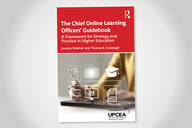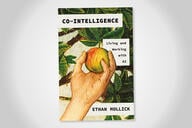You have /5 articles left.
Sign up for a free account or log in.
The 3rd Harvesting Academic Innovation for Learners (HAIL) Storm is done. The 35 attendees from 27 colleges and universities are making their way home from CSU Channel Islands.
Some initial reactions to this latest HAIL Storm:
1 - This Academic Innovation Gig Is A Real Thing:
After 3 HAIL Storms, I’ve become persuaded that academic job of focusing on innovation is actually a thing. This is a job. There are a critical mass of people working at colleges and universities who spend much of their time and energy working on innovation.
This is no little thing. The emergence of a new higher education role deserves notice.
There is every chance in the world that the rise of the academic innovation professional will be seen as further evidence by some of staff bloat and administrative creep. I might argue that most of the work that academic innovation people do is around creating resources and opportunities for faculty. And that every academic innovation person that I met at HAIL is hugely pro-educator, and is dedicated to creating funneling resources to faculty.
This argument, unfortunately, will most likely fail. Until we move away from thinking about higher education human capital in zero sum terms, we will always be vulnerable to claims that every new non-faculty hire will inevitably result in one-less tenure track line.
Whatever we may make of the emergence of a this new academic innovation role, it is a thing. This is a different leadership role than directors of academic computing, or chief information officers, or chief online learning officers. Different from directors of teaching and learning centers. And different from instructional designer, learning designer, and educational technologist.
The reason I know that there are people working in leadership roles built on academic innovation is that these were the folks who showed up to HAIL Storm.
2 - Learning Is the Thread That Binds This Community Together:
The academic innovation leaders that I met at HAIL Storm worked on a wide array of projects, initiatives, and services. They came from colleges and universities that operated under different contexts, with different funding models, serving different stakeholders.
What all the academic innovation people at HAIL Storm seemed to have in common is learning.
Issues of access and cost may be part of the portfolio of academic innovation leaders. But access and costs are viewed through the lens of learning.
There is a strong consensus amongst the academic innovation folks that learning is not the same as credentials. There is great interest in alternative credentials, competency learning, and lifelong learning.
Learning, and the ability to learn how to learn, is understood by this group as the key skills of the 21st century. It is the ability to continuously learn, and to demonstrate this learning through some credential, that drives individual economic opportunity.
3 - Academic Innovation Folks Are Looking For Both Each Other, and a Home:
The energy that animated HAIL Storm was the palpable desire to connect. To find our people. To discover our tribe.
Universally, the attendees at HAIL Storm reported that the existing professional organizations were not fully serving their need for a community of practice.
I very much hope that my friends and colleagues at EDUCAUSE, ELI, OLC, UPCEA, WCET, POD, and other professional associations don’t take this observation as a criticism. Rather, I hope that professional associations see the need to develop a community of practice for leaders of academic innovation as an opportunity.
We need to stipulate that the leadership of existing professional associations in the higher education learning and technology world are trying hard to serve this emerging constituency. They might even argue that they are already doing the work of HAIL Storm.
My message to my colleagues at learning and technology professional associations is that there is space to create events and resources for the academic innovation community. It will be necessary to put a greater focus on organizational change. This is a group that thinks about higher education as a system and an ecosystem. Issues of equity and mobility loom large.
Innovation is understood as a method of advancing the strategic goals of institutions, and of pushing for non-incremental change in the industry as a whole.
If professional associations want to bring the academic innovation crowd into their orbit, then they must shake-off some of the natural conservatism that comes with institutional member driven (and funded) organizations.
I’ll be looking forward from hearing from those who were at the HAIL Storm, and those who were not, about their thoughts about the emergence of academic innovation as a postsecondary profession.
Who do you think is moving into these academic innovation roles?
What does an academic innovation leader do that is different from other campus leaders?
Do you think that we should be training people to become academic innovation leaders through graduate programs? Should there be a PhD in academic innovation? (And how would this terminal degree differ from existing EDD programs in higher education focussed organizational change?).
How should the academic innovation community represent itself to faculty and institutional leadership?
Do you identify as an academic innovation leader?
What was your path into your current campus role?
Does the HAIL Storm sound like a gathering in which you belong?




